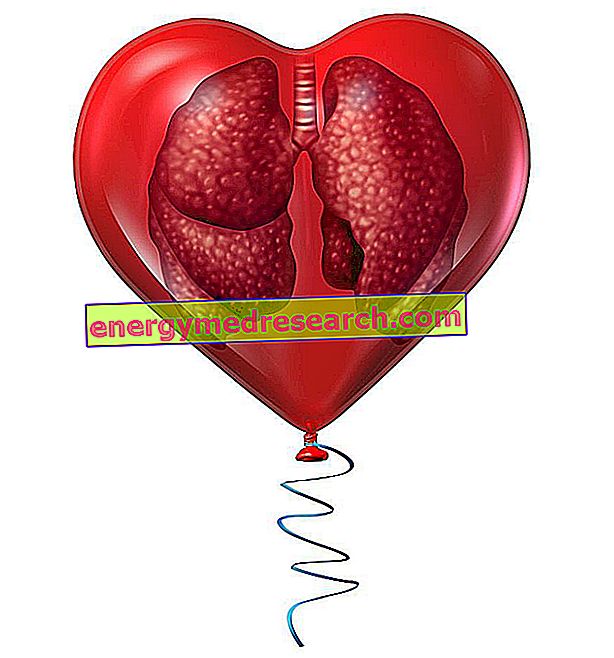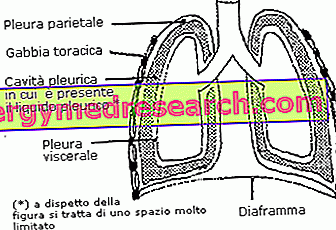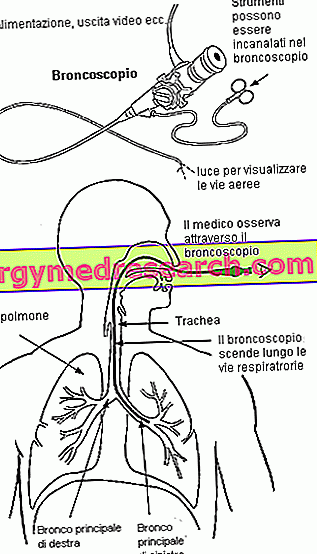In most lung transplants , the healthy lungs that are transplanted into the sick subject come from a recently deceased donor. However, there is the possibility of transplanting even lungs from living donors . Generally, a live donor lung transplant is carried out between people belonging to the same family and requires two donors
Category respiratory health
Introduction As analyzed in the previous article, the pleural effusion outlines a pathological condition characterized by the accumulation of fluid inside the pleural cavity, responsible for respiratory difficulties and chest pain. In this article the attention will be focused on the symptoms caused by the pleural effusion, on the diagnostic techniques useful for ascertaining the condition and on the treatment strategies aimed at its cure
Generality Nasal vestibulitis is an infectious disease that affects the nasal vestibules. It is a bacterial type infection that can be the consequence of other infectious disorders that affect the nose, its mucous membranes and the upper airways, as it can be induced by wrong attitudes. In principle, nasal vestibulitis is considered to be a relatively simple disorder to treat; however, it could lead to severe and, in some cases, potentially lethal complications
Definition The term "pleural effusion", extracted from the medical language, refers to an excessive accumulation of fluid inside the pleural cavity. Under physiological conditions, the pleural cavity contains no more than 10-20 ml of liquid; pleural effusion is an expression of inadequate disposal or exaggerated production of this pleural fluid
Curated by Luigi Ferritto (1), Walter Ferritto (2), Giuseppe Fiorentino (3) Obstructive Sleep Apnea Syndrome (OSAS) is a respiratory sleep disorder characterized by repeated episodes of partial or complete obstruction of the upper airways that occur during the inspiratory phase. This obstruction manifests itself as a reduction (hypopnea) or complete cessation (apnea) of the flow of air, with persistence of thoraco-diaphragmatic respiratory movements
Curated by Luigi Ferritto (1), Walter Ferritto (2), Giuseppe Fiorentino (3) Summary Introduction Epidemiology Diagnosis Epworth Sleepiness Scale (ESS) Treatment Conclusions and bibliography In depth: Sleep apnea: also a safe driving problem Cardiovascular implications Drugs for the treatment of night apnea Remedies for night apnea Sleep Obstructive Apnea Syndrome (OSAS) - introduction Sleep is a natural and biological phenomenon of a periodic nature during which there is a loss of consciousness and the partial reduction or suspension of the functioning of the nerve centers, with the consequent
Curated by Luigi Ferritto (1), Walter Ferritto (2), Giuseppe Fiorentino (3) Sleep Obstructive Apnea Syndrome is the intermittent cessation of airflow to the nose and mouth during sleep; sleep apnea syndrome includes clinical disorders that result from recurrent sleep apnea. The Obstructive Apnea are secondary to anatomical or functional alterations of the upper airways, as well as to certain craniofacial dimorphisms
What is bronchoscopy? Bronchoscopy is an instrumental investigation aimed at the visual exploration of the larger airways (larynx, trachea and bronchi), with primarily diagnostic but also therapeutic purposes. Bronchoscopy is performed by introducing into the nose or oral cavity a thin and flexible instrument, composed mainly of optical fibers and equipped with a light source and a possible camera at the end
Premise COPD is a serious respiratory disease, caused by chronic and pathological narrowing of the bronchial airways and a series of consequent breathing difficulties, especially during the exhalation phase. COPD is the acronym for Chronic Obstructive Pulmonary Disease : Bronchopneumopathy, because the suffering is borne by the bronchi and lungs; Chronic, because COPD has a course that, although slow, is progressive and unstoppable; Obstructive, because the cause of breathing difficulties is an abnormal narrowing of the airways
Generality COPD (chronic obstructive pulmonary disease) is a disease that affects the bronchi and lungs, causing chronic cough and catarrh and interfering with normal respiratory function. Unfortunately, COPD cannot be cured. However, doctors and patients can work together to stop their progression and improve their symptoms
What is Ipercapnia? Hypercapnia is the medical term used to indicate an excess of carbon dioxide in body fluids , particularly in the blood. Often, but not always, this condition goes hand in hand with hypoxia, or the lack of oxygen in the whole organism or in one of its districts, and hypoxemia (oxygen deficiency available in the blood)






